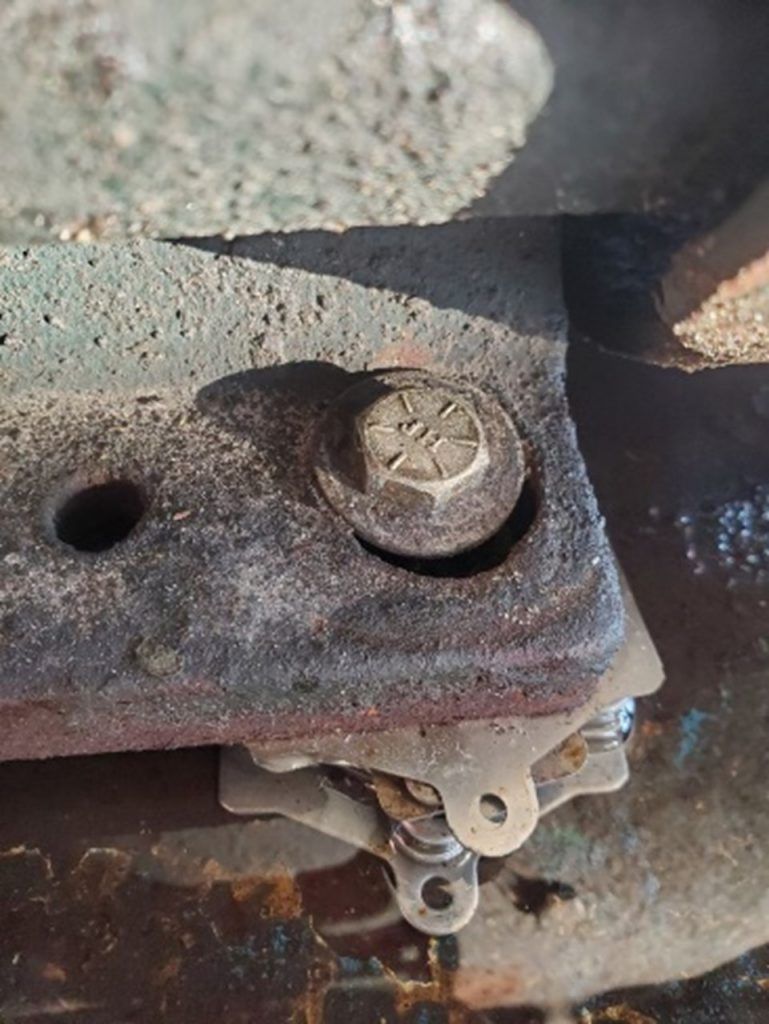Reality (check) Maintenance: Real Life is Messier than Textbooks and International Standards
John-Paul Lambert


It’s more than too many shims or being bolt-bound
I saw the picture above on a LinkedIn post by Robert Lofthouse of Tremor Vibration Services and commented, “This is a classic and it will be bolt-bound as well.”
I thought this diagnosis would be fairly uncontroversial, as I’ve seen this sort of thing quite often in my professional life. Surprisingly, it actually started a really good conversation that I’d like to share.
A conversation about ‘reality maintenance’
I call ‘fixes’ like the one above ‘reality maintenance.’ Whether it’s too many shims or some other ‘MacGyver’ fix, I’ve seen them all in my day. They happen for a variety of reasons because reality is always messier than textbooks and international standards.
My comment reflected that viewpoint. However, Dan Audet, a millwright from the Kapuskasing area in Ontario, saw it differently.
He responded to ask why I had said this. In his experience, he said, it’s not reality. It showed me that we all see things differently – that we have different perspectives based on our experiences.
I got back to Dan and told him that being bolt-bound is commonplace – which is an overstatement. I should have said being bolt-bound or base-bound is not uncommon. What is commonplace, at least from my experience, is poor machinery installation practices, which is what this image was illustrating.
To give you a better idea of where I’m coming from, let me tell you what I see in this picture, bearing in mind that it’s only guesswork.
Gauging the problem
You don’t see much in this photo other than a bit of the foot of the machine, a bolt and a lot of shims. To make sure we’re on the same page, I’m going to walk you through each aspect and tell you exactly what I see.You don’t see much in this photo other than a bit of the foot of the machine, a bolt and a lot of shims. To make sure we’re on the same page, I’m going to walk you through each aspect and tell you exactly what I see.
The foot
I would say what we’re looking at is a low-cost motor foot. Essentially, it looks like a piece of angle iron down the side of the motor. Furthermore, you can see the foot area is not too thick, which means it will be flexible.
The bolt
The bolt head, if it’s a nut and bolt, looks like it’s the wrong size for the hole. This was probably to offer more adjustment along the horizontal plane. Normally when this is done, a higher-grade nut and bolt are used so you can still torque the bolt to spec without damaging it. And, to me, this looks like a good-quality, grade eight (8) bolt, which seems out of place in this picture.
I can’t quite tell if it’s a nut and bolt or a bolt going into a threaded hole. But, if it’s the latter, I would say it looks like the foot is hard up against the top part of the bolt shank.
So far, this maintenance makes sense. If more lateral adjustment is required, I would rather open a bolt hole than machine down a bolt. That way you don’t change the integrity of the foot mount much. But by machining a bolt shank down, you do change the integrity of the bolt.
The big issue with this bolt is that it’s missing a plate under the bolthead to cover the bolt hole. As a result, it looks like the washer they have is being pulled into the hole. It would be much better to make a plate washer out of flat bar so you cover the complete hole.
The shims
Now we come to the crux of the problem. There are a lot of shims, too many in fact. I would say there’s about half an inch-worth of A size (2” x 2”) shims under that foot. The ANSI standard is a max of five (5) shims.
This can cause resonance in the machine, distortion in the base and vibration throughout. It may also cause soft foot because the shim pack is spongy. That is terrible for the lifespan of the machine as vibration is a machine killer.
Most of those shims should be replaced with plates to firm up the base.
What we can’t see is what kind of adjustment needed that many shims. If it’s a motor, what is it driving and why is it so low? Can you imagine if all these shims are only under one end of the motor? That is a lot of angle. Hopefully, there are equal amounts. However, we need to see a lot more of the machine before making any concrete suggestions.
Why ’reality maintenance’ exists
As I said above, there are many reasons why ‘fixes’ like this happen. It could be a quick fix where a correct replacement motor is unavailable, so another is used. It goes in fast and because it’s running OK, it’s never redone correctly.
It can also be that the individual who did the work does not know this is incorrect. Or, maybe they are fed up telling management that the base needs re-work without ever getting an answer.
The list of possibilities is endless, messy, and incorporates employees at all levels. That’s why I call it reality maintenance. I’ll even admit that when I was on the tools, not every installation I did was the best for a myriad of reasons. So, I will never point a finger at anyone.
The fact that Dan doesn’t see these types of issues in his experience is a good thing. Maybe it’s not as commonplace anymore. We have certainly come a long way since I started.
Subscribe to our newsletter and prepare to get MAAD about machine maintenance.

© Copyright 2022 MAAD
